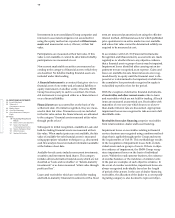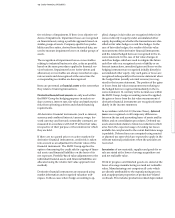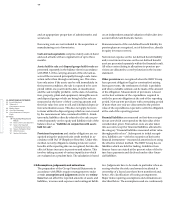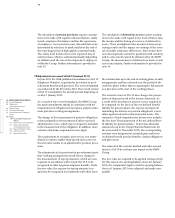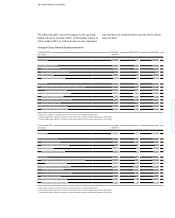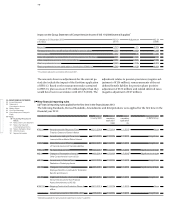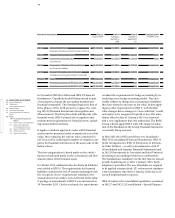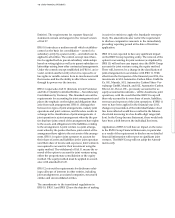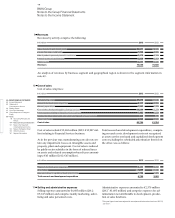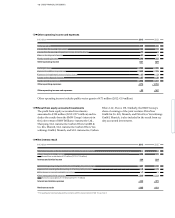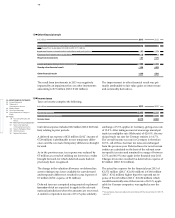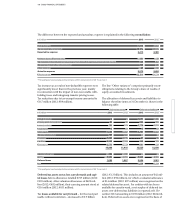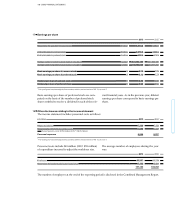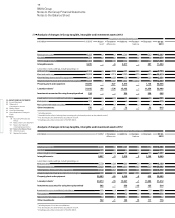BMW 2013 Annual Report Download - page 112
Download and view the complete annual report
Please find page 112 of the 2013 BMW annual report below. You can navigate through the pages in the report by either clicking on the pages listed below, or by using the keyword search tool below to find specific information within the annual report.
112
88 GROUP FINANCIAL STATEMENTS
88 Income Statements
88 Statement of
Comprehensive Income
90 Balance Sheets
92 Cash Flow Statements
94 Group Statement of Changes in
Equity
96 Notes
96 Accounting Principles and
Policies
114 Notes to the Income Statement
121 Notes to the Statement
of Comprehensive Income
122
Notes to the Balance Sheet
145 Other Disclosures
161 Segment Information
In November 2009 the IASB issued IFRS 9 (Financial
Instruments: Classification and Measurement) as part
of its project to change the accounting treatment for
financial instruments. This Standard marks the first of
three phases of the IASB project to replace the exist-
ing
IAS 39 (Financial Instruments: Recognition and
Measurement). The first phase deals initially only with
financial assets. IFRS 9 amends the recognition and
measurement requirements for financial assets, includ-
ing various hybrid contracts.
It applies a uniform approach, under which financial
assets must be measured either at amortised cost or fair
value, thus replacing the various rules contained in
IAS 39 as well as reducing the number of valuation cate-
gories for financial instruments on the assets side of the
balance sheet.
The new categorisation is based partly on the entity’s
business model and partly on the contractual cash flow
characteristics of the financial assets.
In October 2010, additional rules for financial liabilities
were added to IFRS 9. The requirements for financial
liabilities contained in IAS 39 remain unchanged with
the exception of new requirements relating to the
measurement of an entity’s own credit risk at fair value.
A package of amendments to IFRS 9 was announced on
19 November 2013. On the one hand, the amendments
overhaul the requirements for hedge accounting by in-
troducing a new hedge accounting model. They also
enable entities to change the accounting for liabilities
they have elected to measure at fair value, before apply-
ing any other requirements in IFRS 9, such that fair
value changes due to changes in “own credit risk” would
not require to be recognised in profit or loss. The man-
datory effective date of 1 January 2015 was removed
and a new application date left undecided. The BMW
Group will not apply IFRS 9 early. The impact of adop-
tion of the Standard on the Group Financial Statements
is currently being assessed.
I
n May 2011 the IASB issued three new Standards –
IFRS 10 (Consolidated Financial Statements), IFRS 11
(Joint Arrangements), IFRS 12 (Disclosure of Interests
in Other Entities) – as well as amendments to IAS 27
(Consolidated and Separate Financial Statements) and
to IAS 28 (Investments in Associates and Joint Ventures)
all relating to accounting for business combinations.
The Standards are mandatory for the first time for annual
periods beginning on or after 1 January 2013. Early
adoption is permitted. The new Standards are required
to be applied retrospectively. EU endorsement stipulates
a later mandatory date (from 1 January 2014) due to in-
creased implementation expense.
IFRS 10 replaces the consolidation guidelines contained
in IAS 27 and SIC-12 (Consolidation – Special Purpose
Standard / Interpretation
Date of Date of Date of Expected impact
issue by IASB mandatory mandatory on BMW Group
application application
IASB EU
IAS 19
Defined Benefit Plans:
Employee Contributions (Amendments to IAS 19)
21. 11. 2013 1. 7. 2014 No
Insignificant
IAS 27
Separate Financial Statements
12. 5. 2011 1. 1. 2013 1. 1. 2014 None
IAS 28
Investments in Associates and
Joint Ventures
12. 5. 2011 1. 1. 2013 1. 1. 2014 None
IAS 32
Presentation – Offsetting of Financial Assets
and Financial Liabilities
16. 12. 2011 1. 1. 2014 1. 1. 2014 Insignificant
IAS 39
Novation of Derivatives and Continuation
of Hedge Accounting (Amendments to IAS 39)
27. 6. 2013 1. 1. 2014 1. 1. 2014 Insignificant
IFRIC 21 Levies 20. 5. 2013 1. 1. 2014 No Insignificant
Annual Improvements to IFRS 2010 – 2012
12. 12. 2013 1. 7. 2014 No Insignificant
Annual Improvements to IFRS 2011 – 2013
12. 12. 2013 1. 7. 2014 No Insignificant


